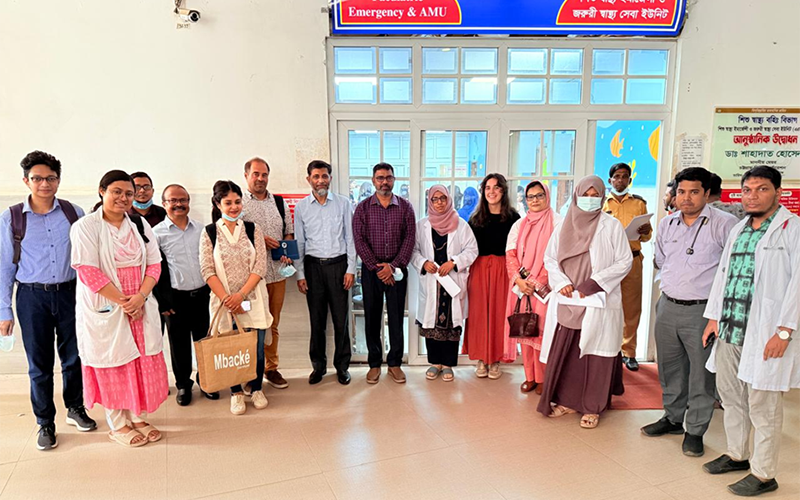
The project is the result of cooperation between Bangladeshi hospitals, BITID, Icddr,b, and the Mérieux Foundation.
Thanks to financial support from Fondation AnBer, the Mérieux Foundation has joined forces with the Bangladesh Institute of Tropical and Infectious Diseases (BITID) and icddr,b to launch this prospective, non-interventional study. Lasting 18 months, RISK4KIDS sets out to assess new minimally or non-invasive triage tools, used individually or in combination, with young patients. In particular, the study concentrates on evaluating blood biomarkers and measuring blood oxygen saturation. Additionally, the study will trial artificial intelligence in the interpretation of pulmonary X-rays.
Conducted directly in hospital settings, the project will assess these tools alongside the routine care provided to children under ten presenting a cough and/or respiratory distress. It plans to recruit 200 patients at each study site.
If the tools are validated, they will contribute to earlier, more accurate therapeutic decision-making, helping to reduce the mortality associated with pediatric pneumonia and tuberculosis while limiting inappropriate prescriptions of antibiotics.
A better distinction between pediatric pneumonia and tuberculosis is urgent
The signs and symptoms of tuberculosis and pneumonia in children are often very similar and lack specificity, making the diseases difficult to diagnose. This challenge is particularly acute in contexts where medical resources are limited. Current methods often rely on invasive samples, which are rarely taken in routine medicine. In addition, it is difficult or impossible to obtain sputum from very young children.
Faced with these obstacles, diagnostic innovation and strengthening the skills of health professionals stand out as essential drivers of improvement. Developing simpler diagnostic tools suitable for children and that can be used in close contact with the patient is a priority for differentiating tuberculosis and pneumonia earlier and more effectively. This distinction is vital to guarantee appropriate treatment and save lives.
It is important to remember that pneumonia remains the leading cause of mortality in children under five in low-resource countries. In Bangladesh, it was responsible for 19 to 24% of deaths among children under five in 2023. Tuberculosis also continues to take a heavy toll: in 2023, it claimed the lives of 213,000 children aged 14 and under. Experts estimate that 96% of these children had no access to treatment, and almost two thirds were aged under five.
